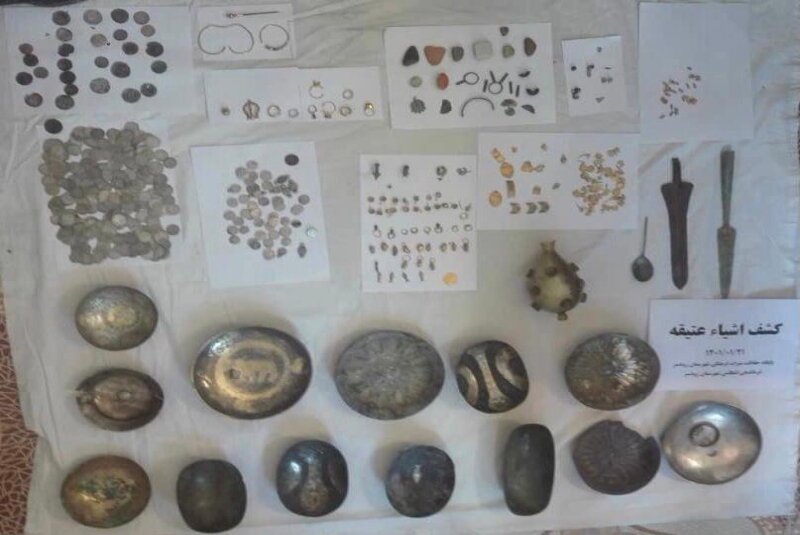523 ancient relics recovered in northern Iran

TEHRAN – Iranian police have recovered 523 historical relics from a smuggler in Rudsar, northern Gilan province.
The police discovered the relics after cultural heritage aficionados told its forces about the unlawful activity of an antique dealer, CHTN quoted a senior police official in charge of protecting cultural heritage on Monday.
The relics, which include coins, rings, pendants, earrings, cups, jars, and rhytons, are estimated to date back to different historical eras including that of Achaemenids, Parthians, Sassanids as well as the (early) Islamic epoch, Hassan Mehri said.
The culprit was surrendered to the judicial system for further investigation, the official added.
Gilan is well-known for its rich Iron Age cemeteries such as Marlik that have been excavated over the past century. It was once within the sphere of influence of the successive Achaemenian, Seleucid, Parthian, and Sassanid empires that ruled Iran until the 7th century CE. The subsequent Arab conquest of Iran led to the rise of many local dynasties, and Gilan acquired an independent status that continued until 1567.
Sophisticated Rasht, the capital of Gilan province, has long been a weekend escape for residents of Tehran who are looking to sample the famous local cuisine and hoping for some pluvial action – it's the largest, and wettest town in the northern region. Gilan is divided into a coastal plain including the large delta of Sefid Rud and adjacent parts of the Alborz mountain range.
ABU/AFM
Leave a Comment